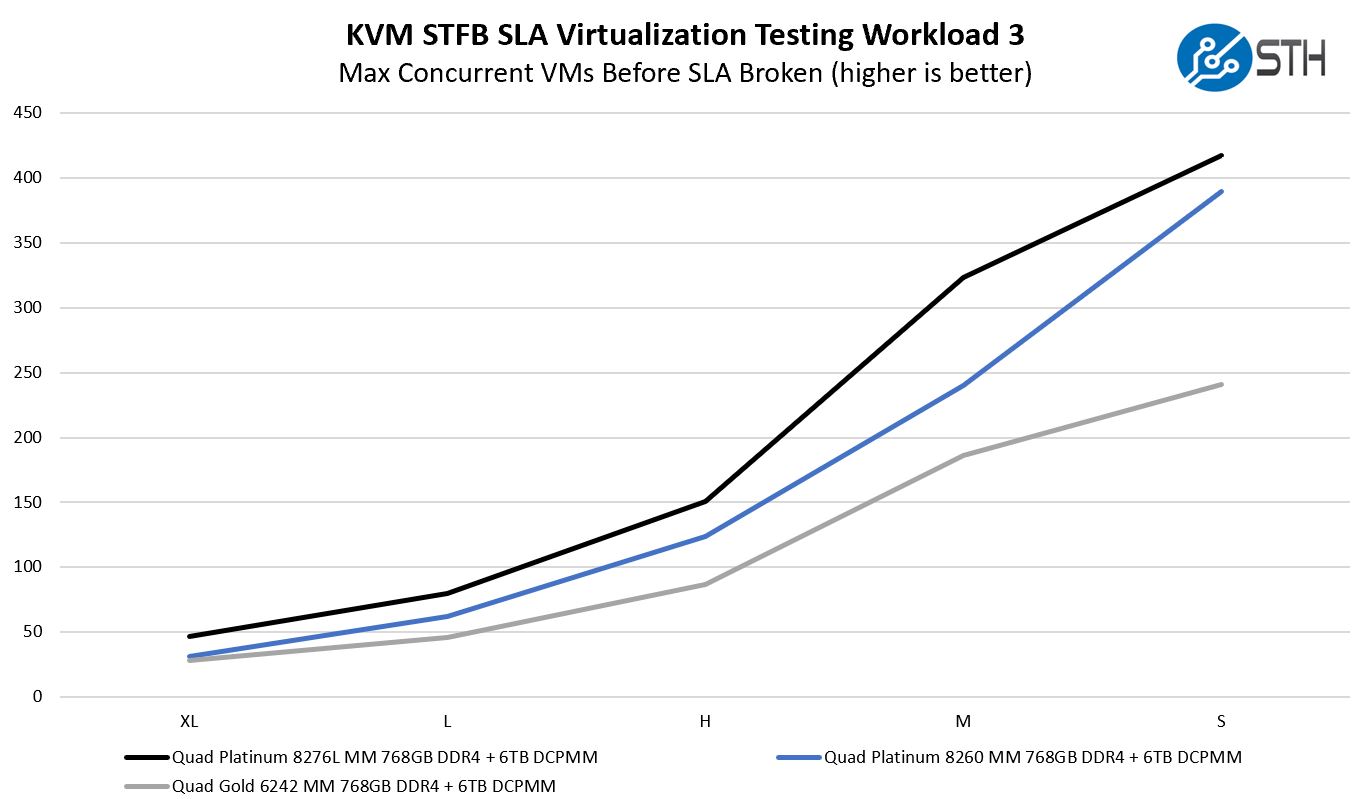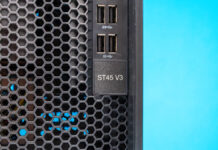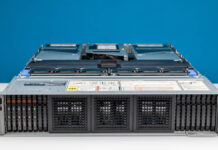Inspur NF8260M5 CPU Performance
At STH, we have an extensive set of performance data from every major server CPU release. Running through our standard test suite generated over 1000 data points for each set of CPUs. We are cherry picking a few to give some sense of CPU scaling. These figures should give some sense of performance scaling across a range of CPUs.
Python Linux 4.4.2 Kernel Compile Benchmark
This is one of the most requested benchmarks for STH over the past few years. The task was simple, we have a standard configuration file, the Linux 4.4.2 kernel from kernel.org, and make the standard auto-generated configuration utilizing every thread in the system. We are expressing results as compiles per hour to make the results easier to read.

Here we saw a fairly good performance from the quad Intel Xeon Platinum 8276L setup. We have been running this test for some time now so we can say that the Intel Xeon Gold 6242 performs better than the quad-socket Intel Xeon E7 V3 family, and only the Intel Xeon E7-8890 V4 4P configuration was able to best the Gold 6242 configuration here. Still, we are showing the performance of different CPU options within the same machine here.
c-ray 1.1 Performance
We have been using c-ray for our performance testing for years now. It is a ray tracing benchmark that is extremely popular to show differences in processors under multi-threaded workloads. We are going to use our new Linux-Bench2 8K render to show differences.

We see the Intel Xeon Gold series as where most customers will buy unless they have specific deals or needs in the Intel Xeon Platinum line. One can see that additional cores help the quad Intel Xeon Platinum 8260 setup here.
7-zip Compression Performance
7-zip is a widely used compression/ decompression program that works cross-platform. We started using the program during our early days with Windows testing. It is now part of Linux-Bench.

For compression workloads, again popular when moving data in AI and deep learning training servers, we get a solid step function for performance scaling.
OpenSSL Performance
OpenSSL is widely used to secure communications between servers. This is an important protocol in many server stacks. We first look at our sign tests:

Here are the verify results:

As one can see, this is another test where performance scales well with both cores and clock speeds.
Chess Benchmarking
Chess is an interesting use case since it has almost unlimited complexity. Over the years, we have received requests to bring back chess benchmarking. We have been profiling systems and are ready to start sharing results:

On the chess side, we see great performance scaling up to 112 cores/ 224 threads with the Intel Xeon Platinum 8276L configuration.
STH STFB KVM Virtualization Testing with Optane DCPMM
One of the other workloads we wanted to share is from one of our DemoEval customers. We have permission to publish the results, but the application itself being tested is closed source. This is a KVM virtualization based workload where our client is testing how many VMs it can have online at a given time while completing work under the target SLA. Each VM is a self-contained worker.

Here, one can see the impact of using Intel Optane DCPMM in the system as we have more memory available to the system and therefore get better performance. The deltas here are also being driven by CPU performance on the virtualized workloads which is why we are seeing a separation between the three different SKU levels. If we had simply used all 32GB DIMMs, with a 1.5TB memory capacity, we would have been completely memory capacity limited. Here at least we can see a combination performance improvement due to core performance and memory expansion with Intel Optane DCPMM.
The company also has a CPU-light back-end workload that is mostly dependent on Redis performance and memory capacity with less of a CPU stressor.

Here we can see the impact of the 2nd Generation Intel Xeon Scalable SKU differentiation in the system. The quad Intel Xeon Platinum 8276L configuration leads here by a large margin.
Next, we are going to take a look at the Inspur Systems NF8260M5 storage and networking performance before moving on to power and the STH Server Spider.




Good review but a huge market for Optane-equipped systems is databases.
Can you at least put up some Redis numbers or other DB-centric numbers?
Yep. MongoDB and Redis, nginx are the most important. Maybe some php benches with caching & etc…
From what I read that’s what they’re doing using memory mode and redis in VMs on the last chart. Maybe app direct next time?
Can you guys do more OCP server reviews? Nobody else is doing anything with them outside of hyperscale. I’d like to know when they’re ready for more than super 7 deployment
It’s hard. What if we wanted to buy 2 of these or 10? I can’t here with Inspur.
I’m also for having STH do OCP server reviews. Ya’ll do the most server reviews and OCP is growing to the point that maybe we’d have to deploy in 36 months and start planning in the next year or two.
Why is half the ram inaccessible?
How’s it inaccessible? You can see it all clearly there?